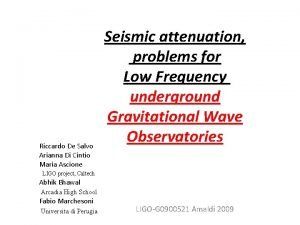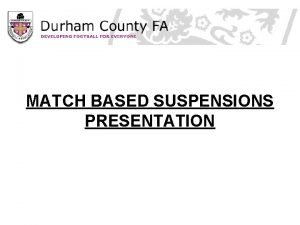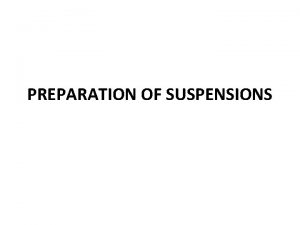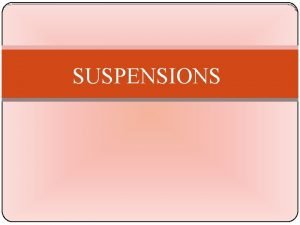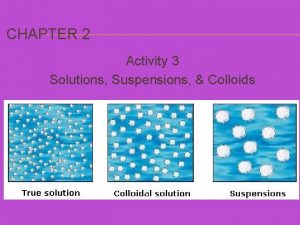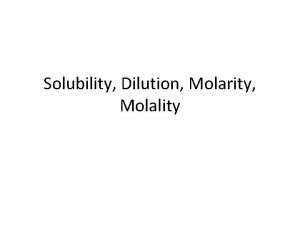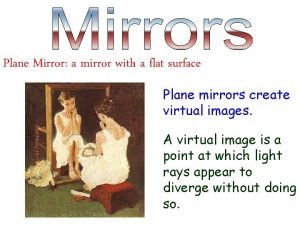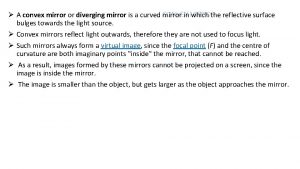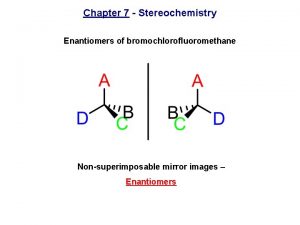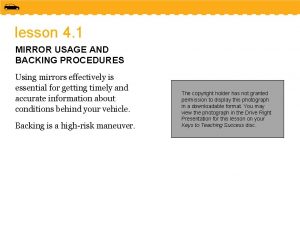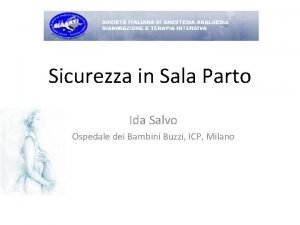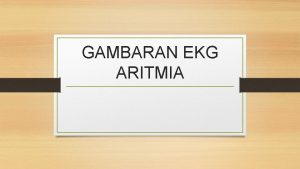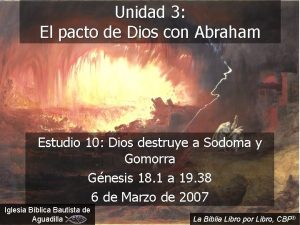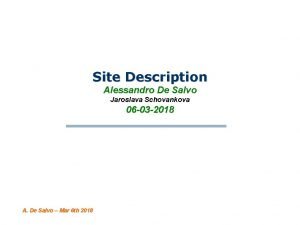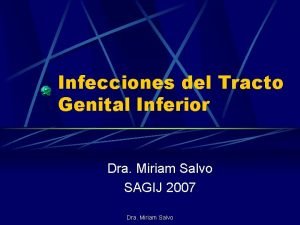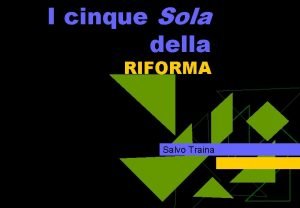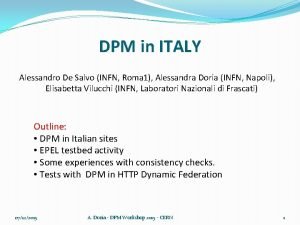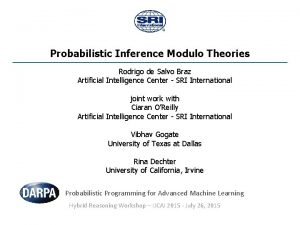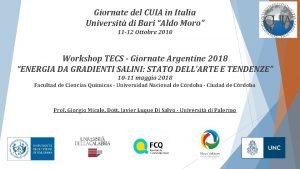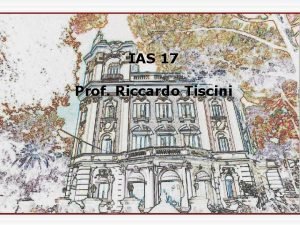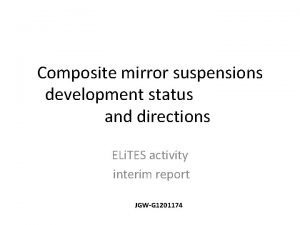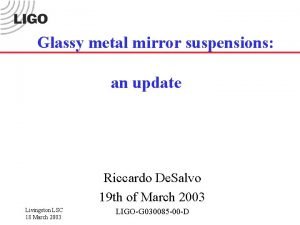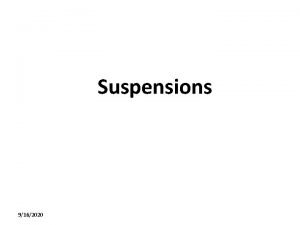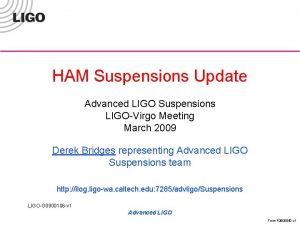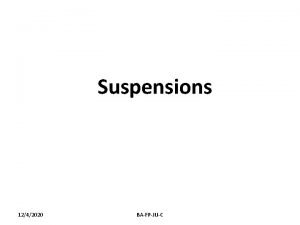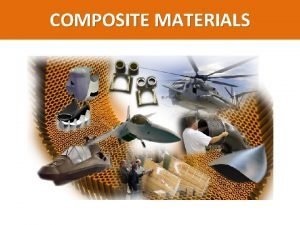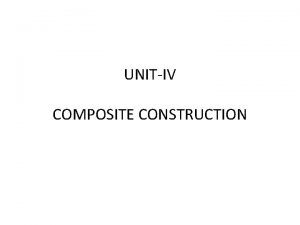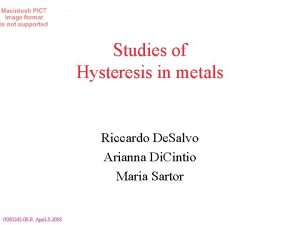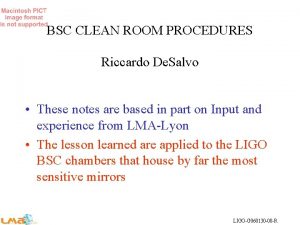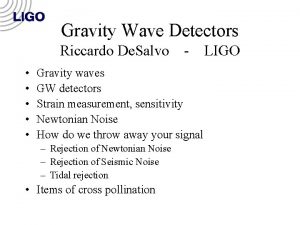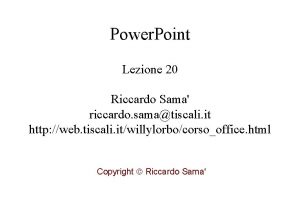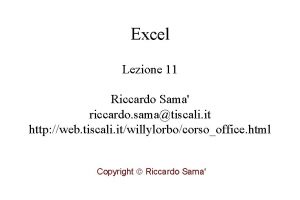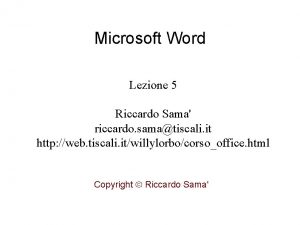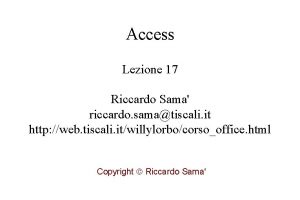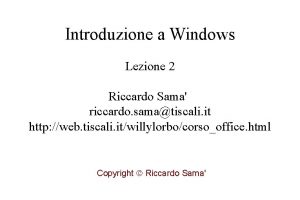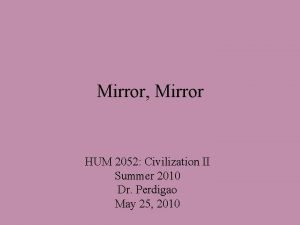Composite mirror suspensions development status Riccardo De Salvo





























- Slides: 29

Composite mirror suspensions development status Riccardo De. Salvo For the ELi. TES R&D group WP 1 & 2 JGW-xxxxxx

The idea • A fresh approach to the design of low thermal noise mirror suspensions for KAGRA and ET

Key features: • Composite structure • Purely Compressive joints • No shear noise • No need for bonding • Easy replacements • Easily scalable to larger masses

Flexure Key features: • • • Silicon flexures Intrinsic Q-factor >108 Thermo-elastic >106 Diluted Q-factor >109 Before cryo gain ! • Many Machining options available

Flexure structure • Ultra-Sound Machined structure • Etching of the flexure surface • Sufficient 0. 15 GPa b. p. • Etching may increase the break point > 1 GPa

Flexure structure • Thin, short, etched flexure • Small flexure aspect ratio = > Large thermal conductance

Chao Shiu laboratory, Taiwan Silicon cantilever with KOH wet etching 4” un-doped double-side polished (001) silicon wafer, 500 um thickness etched down to 92 and 52 µm 10 mm 34 mm 0. 35 mm 500 μm 92 μm or 52 μm 5. 5 mm Original Data Silicon cantilever (d=92 um) Frequency = 103. 20 (Hz) Decay Time = 710. 1 (s) φmeasurement = 4. 3*10 -6 Silicon cantilever (d=52 um) Amplitude(V ) 44. 35 mm Frequency=59. 04 (Hz) Decay Time = 3940. 8 (s) -6 φmeasurement = 1. 3*10=-6 1. 4*10 Time(sec) 0. 3 10 -6 loss measured from residual gas

Thermo-elastic limit • • @ 59 Hz 0. 945 10 -6 loss angle predicted (T. E. ) 1. 3 10 -6 measured (-) 0. 3 10 -6 residual gas 1. 10 -6 loss angle measured => Thermoelastic dominated Amplitude Silicon cantilever (d=52 um) Frequency=59. 04 (Hz) Decay Time = 3940. 8 (s) φmeasurement = 1. 3*10 1. 4*10 -6 -6 φ measurement = Time(sec)

Kenji’s Q-factor measurements • Measurement on a mirror substrate • 108 lower limit

Ribbons Key features: • Compression joint attachment • Machined-polished Sapphire ribbons (from bulk, not grown) • High quality sapphire • High quality surface finish (sub-phonon defect size) • = > High thermal conductivity !

Conductance budget • Preliminary conductance budget from Sakakibara with 1 W load • Thin ribbon responsible for bulk of loss ! ! ! • Plenty of space for parametric optimization 0. 1 o K 0. 5 o K 7. 0 o K 0. 4 o K

Mirror attachment Key features: • Mini-alcoves (low volume machining) • Machining before coating deposition • Minimize substrate induced stress • Recessed attachment, Low vulnerability • No bonding shear noise • No flats on mirror barrel => 100% of mirror front surface available

Connections Key features: • • Purely compressive joints Direct silicon-sapphire contact => No energy loss for bending Problem: Lateral slippage between hard surfaces Sub-µm Indium or Gallium gasket Elimination of stick and slip noise (credit: Vladimir Braginsky) Perfect heat conductivity Easy replaceability

The need for Springs • Elimination of vertical suspension thermal noise (necessary due to KAGRA’s tunnel tilt) • Equalization of stress on wires • Removal of bounce mode from sensitivity range

Cantilever blades vs. stress • With 0. 15 GPa only limited deflection is possible • f=(√g/h)/2π= ~ 8 Hz

Springs Key features: • Silicon springs • 0. 15 GPa break point • Sufficient to equalize stress and shift bounce mode outside bucket • Higher stress necessary to filter out vertical thermal noise

Springs Key features: • How much stress allowable? • In etched MEMS 1. 4 GPa OK • Defects etched away • Allowable surface stress may be > 1 GPa • To be confirmed for this geometry

NIKHEF test • Produce a number of samples • Measure bending breaking point

Jena-Glasgow test • Pull ribbons with different surface treatments to determine • longitudinal stress breaking point

Why Gallium • Indium proved extremely effective to eliminate friction noise in compression joints (Vladimir Braginsky) • Problems: • Melts at relatively high temperature • May need heating mirror to more than 160 o. C for disassembly

Indium vs. Gallium

Violin mode elimination • Fiber-fed Red-shifted Fabry-Perot • Can cool violin modes and bounce modes to m. K level (Can use same idea for Parametric instabilities ? )

Heat link limitations • Mechanical noise re-injection with two step heat link isolation • Insufficient !

Heat link limitations • The heat links are soft above 10 Hz • At 100 m. Hz they are 104 x stiffer • Microseismic peak noise reinjected into mirror actuators is a serious controls problem • Need a solution !

Solution geometry • Suspended actuation platform • Four step mechanical noise filtering • Actuation platform slaved to mirror

Filtering the heat pump noise • The heat links are subjected to 4 filtering steps instead of 2 • Both seismic and chiller noise are filtered way below the requirements in KAGRA’s sensitivity band ( > 10 Hz )

External lock acquisition controls • Use initial-LIGO-like controls for lock acquisition but from a suspended platform • In this phase the optical bench actuators are used for viscous damping

In-lock controls • Use Virgo-like marionetta controls during operation • The mirror OSEM actuator are disconnected • The OSEM sensors are used to slave the optical bench to the mirror Borrowing AEI technology • The effects of microseismic noise on controls are neutralized

Conclusions • KAGRA was said to be : (with some reason) Mission Impossible! • Now it is just “difficult”, but feasible! • KAGRA will be a great 2 nd-1/2 generation GW Observatory • It will also serve as the testbed for all technology needed for the low frequency interferometer in the ET xylophone and for all 3 rd generation observatories
 Riccardo de salvo
Riccardo de salvo Example of suspension
Example of suspension Durham fa suspensions
Durham fa suspensions Ingredients for suspensions
Ingredients for suspensions Evaluation of suspension
Evaluation of suspension Solutions, suspensions and colloids activity
Solutions, suspensions and colloids activity Molality
Molality Plane mirrors create virtual images.
Plane mirrors create virtual images. Convex mirror is a diverging mirror
Convex mirror is a diverging mirror Nonsuperimposable
Nonsuperimposable Mirror mirror commonwealth fund
Mirror mirror commonwealth fund The rearview mirror should be checked
The rearview mirror should be checked Structural member properties
Structural member properties Ida salvo
Ida salvo Salvo maria re
Salvo maria re R on t
R on t Eli foi salvo
Eli foi salvo Como ser salvo y saberlo
Como ser salvo y saberlo Génesis 19 30 38 explicación
Génesis 19 30 38 explicación Alessandro de salvo
Alessandro de salvo Miriam salvo
Miriam salvo Cinque sola
Cinque sola Dpm italy
Dpm italy O que fazer para ser salvo
O que fazer para ser salvo Este camino ya nadie lo recorre salvo el crepúsculo
Este camino ya nadie lo recorre salvo el crepúsculo Rodrigo de salvo braz
Rodrigo de salvo braz Salvo termopoder
Salvo termopoder Javier luque di salvo
Javier luque di salvo El poder de la cruz de cristo
El poder de la cruz de cristo Ias 17
Ias 17
